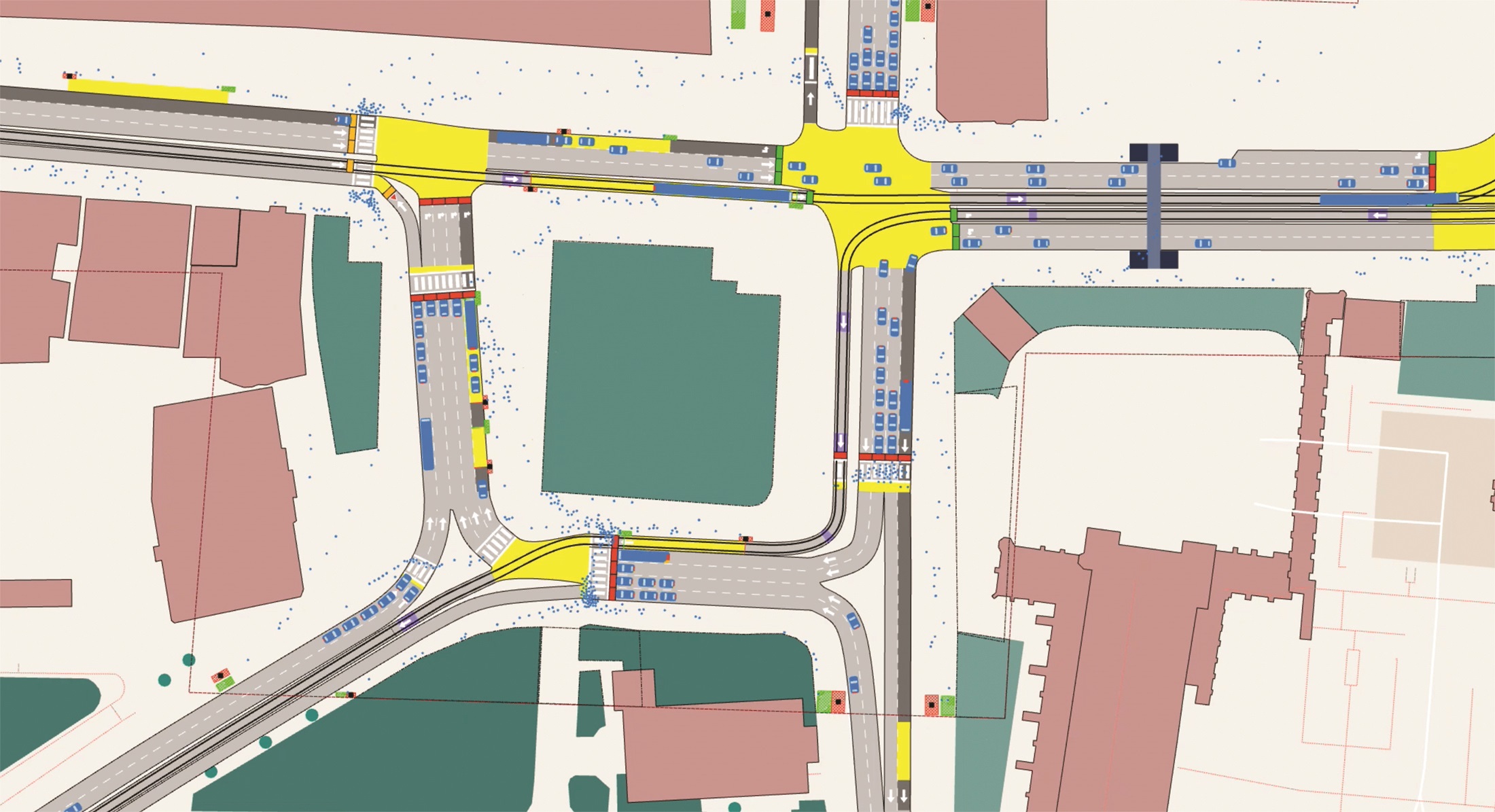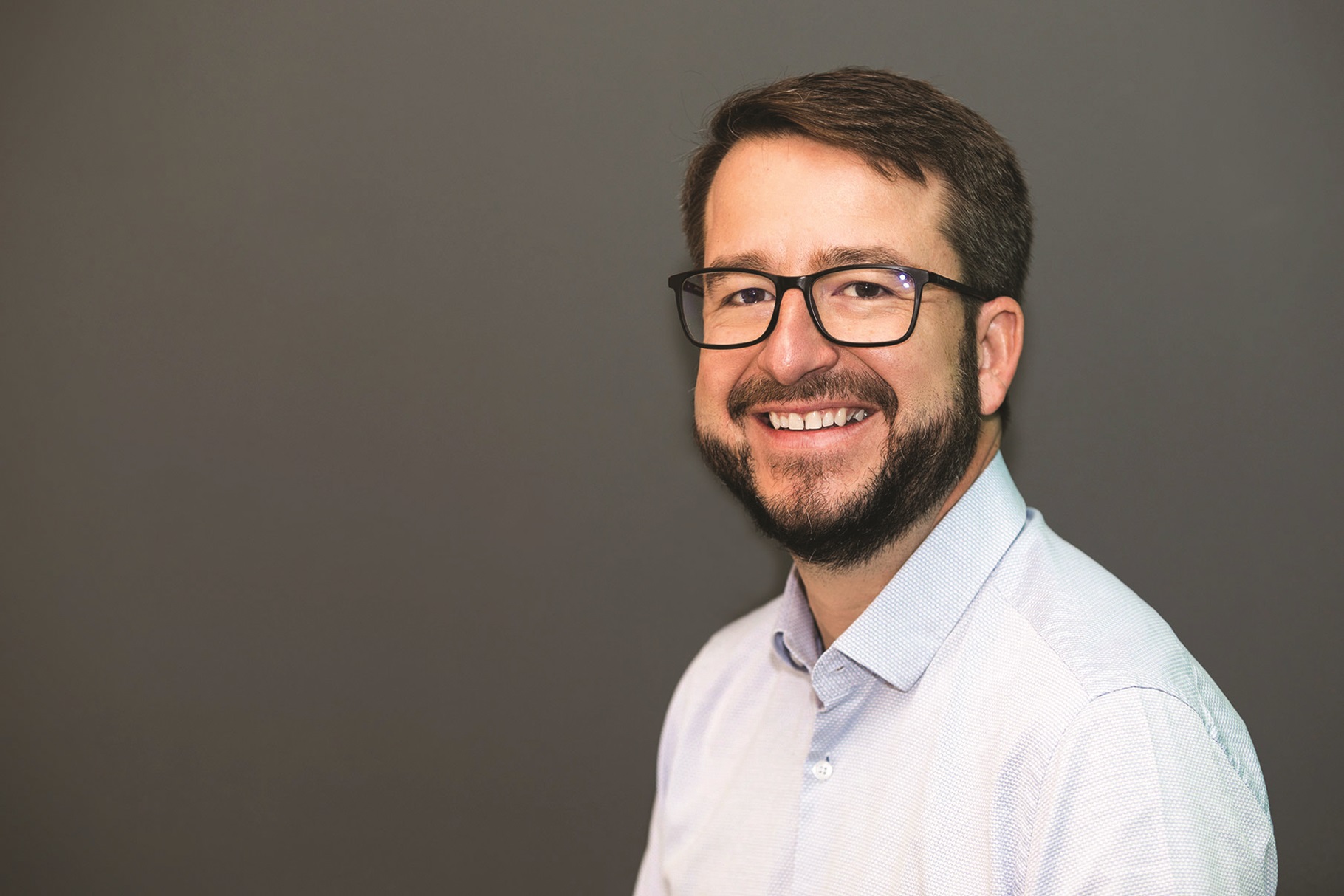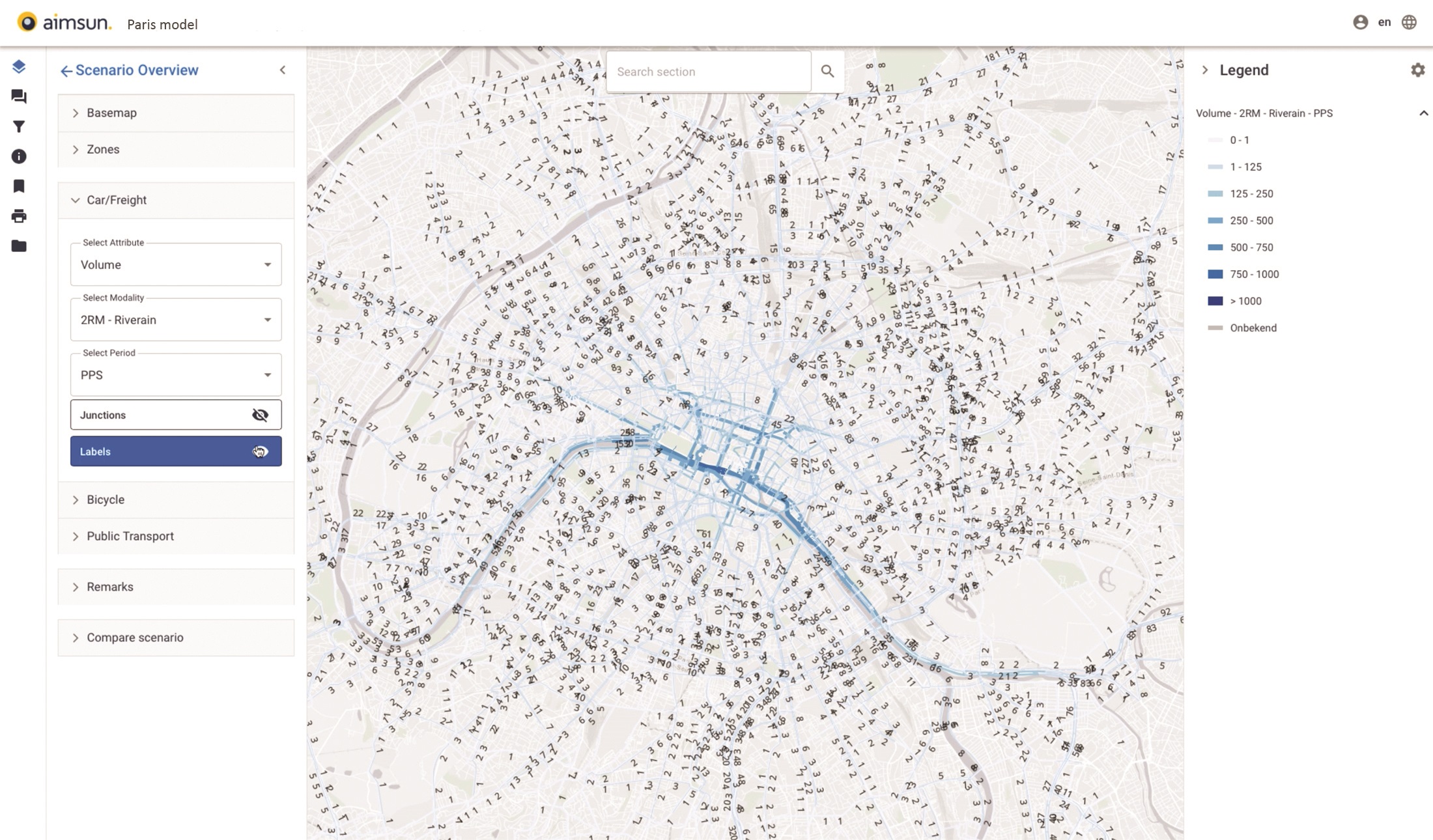
Earlier this year, tech firm Aimsun announced a switch in strategy. The company says it is "transitioning its focus from software delivery to outcome-based solutions". It’s a big change in emphasis – so why take the step? “I think it's a mix,” explains Aimsun CEO Alexandre Torday in a call with ITS International.
“First, our own feeling on what we can offer to the industry; but I think we have accelerated this transition once we observed that quite a few of our key clients were fully in agreement with this vision. So there is a feeling of ‘this is what we could do’ and the client is, like: ‘Oh my God, that's what we want’. So that's the direction: we have to invest, accelerate, prepare this and go out to the market. The reality is that we have been in the software industry forever and we continue to be a software company. It's just the fact that, to put it very bluntly, there are people who still think that by buying software, you have solved the problem. Very often we say: ‘Guys, once you have a USB dongle and you plug it in the laptop, you still don't have the answer to your question which is: What will be the impact of the new light rail in Barcelona? This is not what you want’.”
Reverse engineering
So what do clients want? “Very often people say: ‘I want I want a simulation. I want a model. I want the microsimulator, I want…’ No, that's not what you want - tell us the truth – what do you really want? And when you go back to a client in the end, they say: ‘What we want is answers’. Okay, so let's reverse-engineer from there. How would you like the answer to come to you? [The client says:] ‘Oh, ideally, I would like a platform where I can show the results to different stakeholders, where different consultants can use the same platform for consistency, to be able to answer questions’.”
As Torday points out, if you work backwards from the desired outcome, then the way you get there – microsimulation, a data-driven approach or whatever – will fall into place. “Don't talk me about the tools, talk about what you want at the end,” he says. “And this is how the process has come about. People just want a digital mobility solution to interact with the specialists that can work on all the assumptions with the back-end team – the consultants, the commercial and political stakeholders. They just want to know: did we do the testing to be sure that the model is accurate? Have we checked these KPIs? And show me the results.”
“To put it very bluntly, there are people who still think that by buying software, you have solved the problem”

And then they want to see quick results in a way that is easily understandable, rather than on a mass of impenetrable spreadsheets. Torday is not surprised that Aimsun’s new approach has had a receptive response – although he admits it was even more positive then he expected. “I thought it would take more effort to convince them because we thought a lot of people will be stuck on: ‘Well, we always did that - why would you do it differently?’ So we were afraid that some people would just say: ‘No, we buy licences from you; we have a bunch of local modellers; then we do tenders; we have consultants buying their licence from you, building models that are project specific; and then, essentially, when it's done, potentially the model will die and we just start again.’”
This new approach requires clients to ‘own’ more of the solution and manage different stakeholders. So even though Aimsun says it will save money and time, it does increase complexity. “It requires that they have to take ownership of the management of the solution and we were afraid that some clients would say; ‘It is too complicated for me’; but quite a lot of them were just like, ‘Great - that's what I want’.”
General shift
This could be because of a more general shift in the way that transportation is being viewed by governments, authorities, agencies, and also companies themselves. “There are way more stakeholders now that want answers to questions related to people's mobility than 10-15 years ago,” Torday muses. “Then, people would say: ‘This is just the road administration's question, period’. Nobody cares.” A new freeway, a new tunnel or a new traffic signal were seen perhaps as sitting in their own silo, not affecting anything else.
This has changed, he believes: “Now I think there is an implication at all levels: energy consumption, air quality, energy analysis, accessibility, planning. It’s not anymore [the question]: ‘We will build a new neighbourhood in 40 years - how many lanes do we need to serve that?’ Mobility is changing super-fast: people with scooters are doing that. This is not just how many lanes on a motorway I need. I cannot just say: 5,000 people, increase the capacity of the motorway by 20% – done! So the problem is very complex, which is leading to a challenge we are facing every day, which is to convince these different stakeholders that they can use – for most of the cases - the same digital mobility solution or platform to ask the question; they don't have to buy and build their own.”
Cost savings
This is a cost-saving – particularly in the public sector when working for a local or city authority, for example. “I mean, we are happy to sell the same solution 15 times to different departments!” Torday jokes. “But that wouldn't be fair, especially for the taxpayers. But more importantly, this is not just about money - it's about consistency of the results. If one department is saying: ‘We should invest more in public transport, because I have done Model A that says that we will save 20% on energy’. And then you have another department that says: ‘Thanks to Model B, we think that public transport investment is a disaster and we should invest in Uber.’”

Torday laughs: “When that arrives on the desk of the minister, he would say: ‘What do I do with that? This is all over the place - fire everyone!’ Obviously we are biased because we are a strong believer that the quality of this platform is enough so that people don't have to set up a lot of other platforms. We don't think that we are amazingly better with our core algorithms - we have been fighting with different competitors across the industry. What differentiates us now, in our opinion, is usability – this is where we think that we are cutting-edge with our offering.”
Crucial usability
Since the stakeholders who are interested in transportation issues now are wider than purely roads engineers these days – recognising that the way people live and move is fundamental – this usability will be a key selling point for Aimsun. “That's correct,” says Torday. “That being said, to respect our dear colleagues who are transportation engineers, they still have the responsibility to make sure that the back end of the solution is properly configured and that the results make sense. For complicated questions, you will have to go to experts that will set up some of the elements so that you can get your answer properly, but the interface will allow you to access the answer in a very easy way.”
It is web- and cloud-based, open to multiple people who can log in if they have permission. “It just accelerates the communication chain,” says Torday.
Within Aimsun has there been internal resistance to this change in philosophy?
“There are way more stakeholders now that want answers to questions related to people's mobility than 10-15 years ago”
Torday pauses. “Well, I'm very enthusiastic. Maybe people are shy to talk to me! My first feeling is people really think that it makes total sense and it's a natural transition. It's still difficult on a daily basis - especially for people that have been working in the company for 10, 15, 20 years, who are always mentally trained to organise the best software.”
The new message to some extent pushes the software itself into the background: Aimsun is focusing on the ‘why’ rather than the ‘how’. Even so, the company is very clear that software – in this case its flagship Aimsun Next product – remains at the heart of its process and is fundamental to what it’s doing.
The company has launched five mobility solutions, all prefixed with ‘Aimsun’: Insight (historical data analysis); Predict (real-time data analysis); Start (rapid assessments and pre-feasibility studies); Plus (full planning and operations); and Live (real-time decision support system for transport management). These package what Aimsun calls its "classic transport simulation software with data management and analytics, artificial intelligence and services".
Aimsun Next
“We wanted to be sure people don't didn't get confused,” explains Torday. “We wanted to say that Aimsun Next remains the core engine behind most of our solutions – Aimsun Plus, Aimsun Start, Aimsun Live, the ones that have a simulation component. But the way it's set up, bundled, the way you digest the data, the way people can interact with it, depends on what you need as a client and we have different solutions for you. But the very, very back-end engine and the algorithms are from Aimsun Next.”

Torday says there were ‘awkward’ conversations with some consultants about the new approach because they saw Aimsun would be setting up models and thus taking work away from them. “They said: ‘This was part of our business’. And we said: “Yeah, but that was the very painful part of the business where usually you lose money. And you were doing it because then you will gain money by doing scenario analysis where you provide your intelligence of saying: ‘Hey, I have a new solution why the light rail is taking the A route instead of the B route’. That's what you're good at. We are very good at setting up models, so we will set them up and maintain them and this will be more cost-effective for the end users. Way more people will have the feeling that they can ask questions and guess to who they will ask questions? To you! So leave us alone for a little moment. We will set this up and you will see that it's rewarding for both you and me. And you will continue to be able to use Aimsun Next to configure any of your light rail itinerary solutions in the platform to answer the questions of your client. So, no panic guys. It's about increasing the size of the cake instead of fighting for a small cake. That's really what it is.”
“It's about increasing the size of the cake instead of fighting for a small cake”
Simulation and modelling projects at times can be perceived by clients – perhaps unfairly – to be exercises in reinventing the wheel, with the client picking up the tab multiple times. What they might really like instead is a single digital twin with forecasting capabilities, which will be kept up to date. This is the ‘service’ rather than ‘software’ element which Aimsun wants to embrace.
Test scenarios
“There are a lot of trendy words out there,” Torday says. “But it's essentially something where you say we are creating a representation of the mobility in your city or region. We are maintaining it with more and more data that will allow us to do it faster, more consistently, with more accuracy. And then you - the consultants and the stakeholders - use this platform to exchange ideas and test scenarios. But you don't pay again and again for the same intersection.”
But surely there is a danger – in this ‘service’ scenario - that the software becomes a commodity?
Torday considers this carefully. “We have to have an educated conversation with our clients,” he says. “What is the value you put on having this platform or solution available for you? How much did it help you to save money - not just on the studies – but how much did that help you to save money in your real-life investment? If you can have a tool that allows you - well backed-up with the right KPIs – to say I want to invest more in this and that, there are millions that can be saved. Also, what is the other opportunity? Do you want to go back to Excel spreadsheets? Do you want to go back to the old way of doing consulting? We are very convinced that people will see the real value.”











